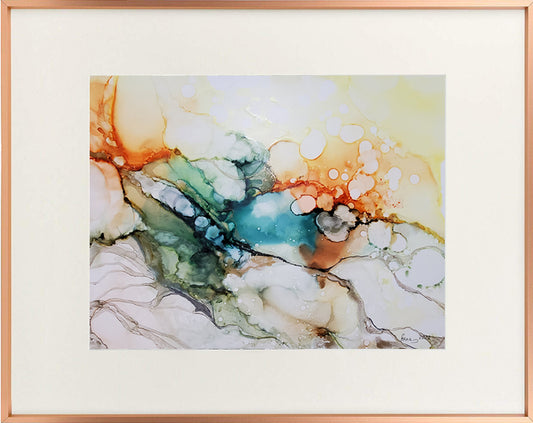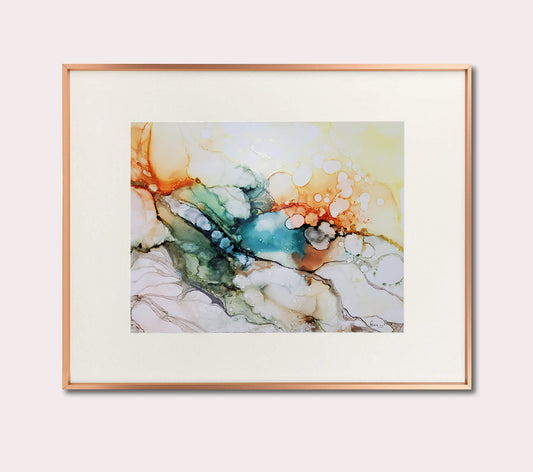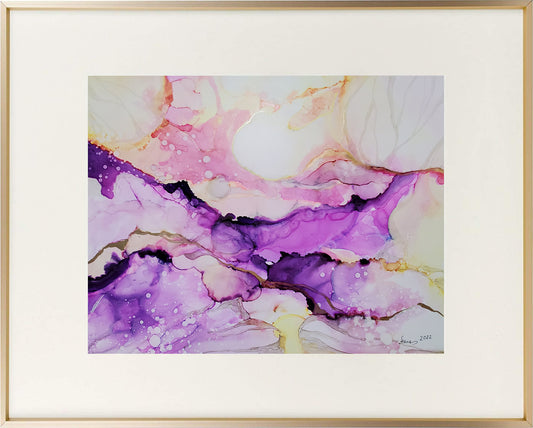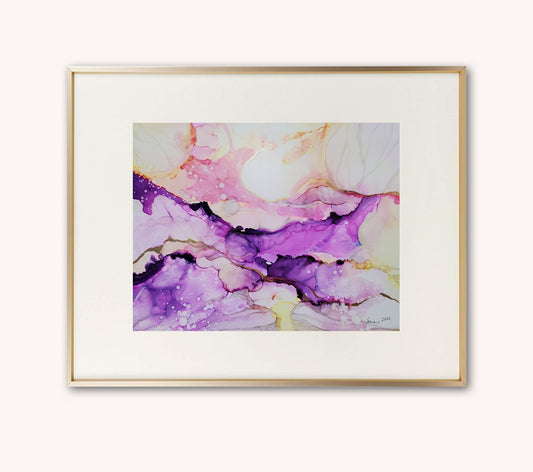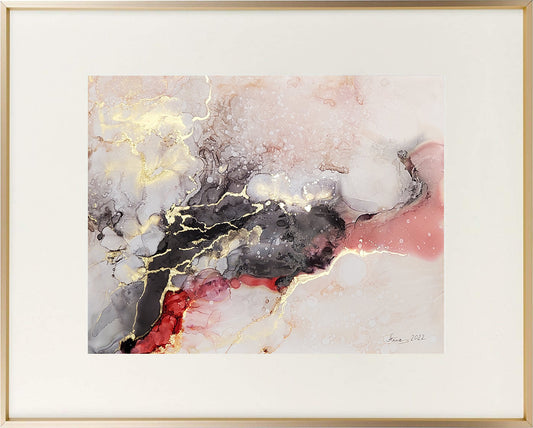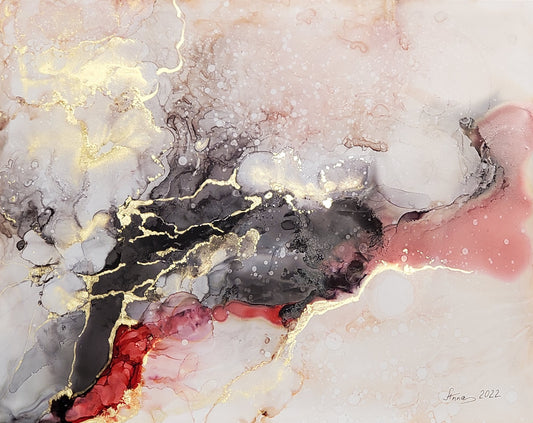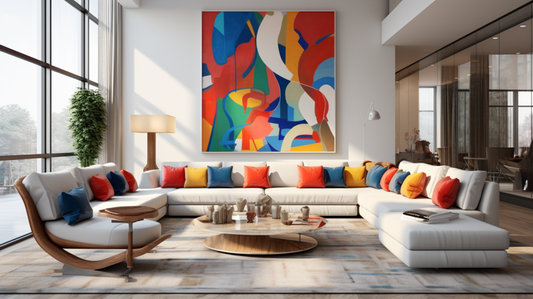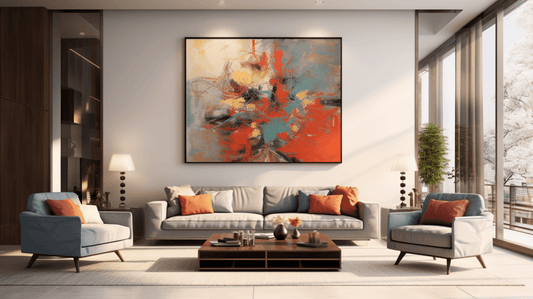
Gerhard Richter, Abstraktes Bild, 1986, oil on canvas
Abstract art is a form of visual expression that does not rely on realistic representation of objects or scenes, but rather uses shapes, colors, lines, textures, and patterns to create compositions that convey meaning and emotion. Abstract art is also known as non-figurative, non-representational, or non-objective art.
Abstract art has a long and rich history that spans across different cultures and periods. The origins of abstract art can be traced back to ancient times, when artists used geometric patterns and symbols to decorate pottery, textiles, and architecture. Some of the earliest examples of abstract art are found in Islamic art, which forbids the depiction of human and animal figures, and instead uses intricate designs of arabesques, calligraphy, and tessellations.
In the Western world, abstract art emerged as a radical departure from the traditional norms of realism and perspective that dominated the art scene from the Renaissance to the 19th century. The advent of modernism in the late 19th and early 20th centuries brought about a series of artistic movements that experimented with new ways of expressing the changing realities of technology, science, philosophy, and society.
Some of the most influential abstract art movements include Impressionism, which focused on capturing the fleeting effects of light and color; Expressionism, which emphasized the emotional and psychological aspects of art; Cubism, which fragmented and reassembled forms into new perspectives; Futurism, which celebrated the dynamism and speed of the modern age; Constructivism, which used geometric shapes and industrial materials to create abstract sculptures; Surrealism, which explored the subconscious and irrational aspects of the human mind; Abstract Expressionism, which used spontaneous gestures and drips of paint to create large-scale abstract paintings; Minimalism, which reduced art to its essential elements of form, color, and space; and Op Art, which created optical illusions and visual effects with geometric patterns and contrasting colors.
Abstract art is not limited to painting and sculpture, but can also be found in other media such as photography, collage, printmaking, installation, performance, digital art, and video art. Some of the most famous abstract artists include Wassily Kandinsky, Piet Mondrian, Kazimir Malevich, Paul Klee, Jackson Pollock, Mark Rothko, Bridget Riley, Yayoi Kusama, Sol LeWitt, Anish Kapoor, Gerhard Richter, and Damien Hirst.
But what is it that draws people to the enigmatic world of abstract art? What are the benefits and challenges of engaging with abstract art? How can one interpret and appreciate abstract art? And what are the current trends and inspirations in abstract art?
One of the main attractions of abstract art is its ability to stimulate the imagination and creativity of both the artist and the viewer. Abstract art does not impose a fixed or literal meaning on its audience but rather invites them to explore their own associations and interpretations. Abstract art can also evoke a range of emotions and moods that transcend words and logic.
Another benefit of abstract art is its versatility and diversity. Abstract art can be created with any medium, technique, style, or theme. Abstract art can also be influenced by any source of inspiration such as nature, music, literature, mathematics, science, spirituality, politics, or personal experience. Abstract art can also be adapted to any scale or space such as a canvas, a wall, a building, a landscape or a screen. Abstract art can also appeal to any taste or preference such as simple or complex, bright or dark, geometric or organic, orderly or chaotic, minimal or maximal, and so on.
However, abstract art also poses some challenges for both the artist and the viewer. One of the difficulties of creating abstract art is finding a balance between freedom and discipline, between intuition and intention, between expression and communication. The artist has to decide how much to reveal or conceal, how much to control or surrender, how much to guide or surprise. The artist also has to deal with the risk of being misunderstood or ignored by the audience or the critics.
One of the difficulties of viewing abstract art is overcoming the expectations and prejudices that we may have about art. We may be used to looking for recognizable images or stories in art, or we may be looking for a clear message or purpose in art. We may also be influenced by our cultural or educational background, our personal taste or mood, or our prior knowledge or experience with art. We may also be distracted by external factors such as the context, the presentation, or the price of the artwork.
Therefore, to fully enjoy and appreciate abstract art, we need to adopt a different mindset and attitude. We need to be open-minded and curious, willing to explore and experiment, ready to challenge and question. We need to be attentive and observant, looking closely and carefully, noticing the details and nuances. We need to be active and participatory, engaging with the artwork physically and mentally, emotionally and intellectually. We need to be respectful and humble, acknowledging the artist’s vision and effort, accepting the artwork’s autonomy and integrity.
We also need to use different tools and strategies to interpret and understand abstract art. We can use our senses and emotions to respond to the artwork’s formal elements such as shape, color, line, texture, and pattern. We can use our imagination and creativity to generate our own associations and meanings. We can use our knowledge and research to learn about the artwork’s context, history, and influences. We can use our communication and dialogue to share our opinions and perspectives with others.
Finally, we can also look at the current trends and inspirations in abstract art to see how it evolves and adapts to the changing times. Some of the recent developments in abstract art include:
The use of new technologies such as digital tools, software, algorithms, artificial intelligence, virtual reality, augmented reality, interactive media, and social media to create, manipulate, display, and distribute abstract art. The use of new materials such as recycled, organic, synthetic, or hybrid materials to create abstract art that is more sustainable, ecological, or biodegradable. The use of new concepts such as complexity, chaos, fractals, networks, systems, emergence, self-organization, feedback loops, generative processes, randomness, probability, uncertainty, entropy, information theory, data visualization, simulation, modeling, mapping, coding, hacking, glitching, and encryption to create abstract art that reflects the scientific and mathematical aspects of reality. The use of new expressions such as activism, social justice, identity, diversity, inclusion, intersectionality, feminism, queerness, decolonization, globalization, migration, displacement, trauma, healing, resilience, and hope to create abstract art that addresses the political and cultural issues of our time.
In conclusion, abstract art is a fascinating and diverse form of visual expression that offers many benefits and challenges for both the artist and the viewer. Abstract art stimulates the imagination and creativity, evokes emotions and moods, invites interpretations and meanings, reflects realities and influences, adapts to changes and innovations, and communicates visions and values. Abstract art is a magnetic appeal that draws people to the enigmatic world of abstract art."
Intrigued by the fascinating world of abstract art? Your artistic journey doesn't have to end here. Explore a mesmerizing collection of captivating and modern abstract artworks by visiting our Abstract Art Collection and Shop. Anna Manukyan's gallery is a treasure trove of creativity, where you can not only see but also acquire unique pieces that resonate with your aesthetic sensibilities. Dive into a realm of imagination, emotion, and innovation as you discover the transformative power of abstract art. Don't miss the opportunity to enrich your surroundings with these thought-provoking creations. Start your exploration now and let the art on this page inspire your soul.

